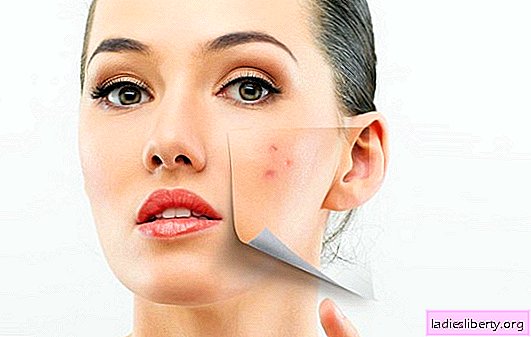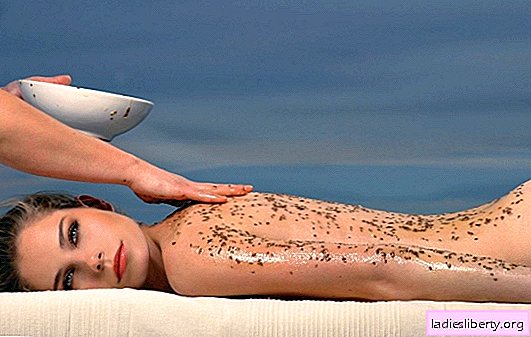
Rashes on the face are one of the unpleasant problems for a person at any age. Not only physical complaints related to skin lesions are disturbing, but also the changed appearance delivers a lot of experiences. This leads to depression, social closure, reduced working capacity and quality of life due to experiences.
Many people mistakenly consider the appearance of rashes on the face as a cosmetic defect, and, accordingly, use various cosmetics to mask this manifestation on the skin. In fact, this is a medical problem associated with the general condition of the body, with existing chronic diseases. This is an external manifestation of pathological processes in the body.
Causes of rashes on the face
With rashes on the face, the causes can be so different that without a narrow specialist it is not always possible to figure it out on your own. But the dermatologist is not in all cases the doctor who can help in solving the problem. Often, with rashes on the face, the causes are associated with a serious pathology of the internal organs (systemic diseases), oncological processes in the skin, allergic reactions, have a hormonal nature (during pregnancy). Therefore, if the rash appeared for no apparent reason, it is necessary to find out its etiology for the correct and successful further treatment.
External causes of rashes on the face
The most common causes leading to the appearance of rashes on the face in a healthy person:
• allergic reactions to food components;
• improper or inadequate skin care, use of unsuitable or crude hygiene products;
• bad habits;
• violations in the diet (abuse of spicy, pickled, smoked, fatty foods, junk food, a large number of spices);
• diathesis;
• hypovitaminosis;
• hormonal imbalance (during pregnancy);
• psychological problems and nervous stress.
Diseases leading to facial rashes
With rashes on the face, the causes can be pathological conditions or diseases of various organs and systems:
• pathology of the digestive system is the most common cause of rash;
• dermatitis (seborrheic, allergic, atopic, toxicoderma) - diseases with various etiological factors;
• systemic skin diseases (SLE - systemic lupus erythematosus);
• skin diseases caused by an infectious agent (demodicosis, various lichen - Zhiber pink lichen, multicolored, or pityriasis versicolor);
• diseases in which changes occur, primarily in the epidermis: psoriasis, eczema, acne;
• human immunodeficiency virus (HIV);
• syphilis;
• skin cancer: basal cell melanoma;
• skin diseases, which, while not being oncological, in the absence of timely treatment, can acquire malignant growth: basal cell carcinoma.
Hormonal disruption
With hormonal disorders in the body, numerous, red, rashes appear on the face (in the cheeks, chin, forehead) and neck. This is due to the cause of puberty in adolescents, the restructuring of all processes in the body in this period. But such a rash is not only in adolescents. It can be very numerous in the form of spots and located in the nasolabial triangle and chin in women before menstruation, during pregnancy, during menopause.
Hypovitaminosis - one of the causes of rashes on the face
One of the common causes of rashes on the face is spring hypovitaminosis. This mainly concerns vitamin D (calciferol), the main part of which is synthesized in the skin under the influence of sunlight. During the period of prolonged absence of the sun and the inability to stay on the street, an additional intake of vitamins is necessary, since it is impossible to compensate for its need only with food. But in such cases, the doctor’s recommendations on the quantity, duration and frequency of administration are necessary: the consequences of an overdose of cholecalciferol (vitamin D3) can be much harder than hypovitaminosis itself, and one of the symptoms of this condition will be the appearance of similar rashes on the skin.
Malnutrition
Harmful food, which for many becomes a necessity, and which can be very difficult to refuse, causes pathological changes in the skin. In addition to spicy, fried, greasy, spicy food, the constant use of sweets, cakes, pastries, and rich buns affects the quality of the skin and appearance. Without significant restriction or rejection of such harmful food, success in treatment cannot be achieved.
Bad habits
Cigarettes and alcohol, various sweet carbonated drinks lead to a significant deterioration in skin quality, the appearance of rashes on the face. Changes progress over time for various reasons (hypoxia leads to a violation of the blood supply to the skin, hypovitaminosis, toxic effects on epidermal cells, a developing pathology of the digestive tract and respiratory system), which aggravates the condition of not only the skin, but also the whole organism. Skin on the face becomes an indicator of internal health problems.
Stress - the cause of rashes on the face
Chronic stress, neurosis, depression and psychological problems affect the condition of not only the body, but also the skin. The constant release of stress hormones (adrenaline, vasopressin) disrupts the blood supply in the vessels not only of the internal organs, but also in the capillaries of the skin, worsening its metabolism, lowering the level of oxygen. The result is the appearance of rashes of a different nature on the skin of the face and neck. Over time, the problem may worsen, changes become persistent.
Skin Care and Exposure to Temperatures
Improper facial skin care can lead to serious consequences. This occurs when using expired or poor-quality cosmetics, insufficient facial skin cleansing. Clogging of pores occurs, comedones develop, in the future - purulent inflammatory process.
Sudden changes in temperature: in winter, in severe frost, the appearance of a cold allergy is likely when red spots appear on the face skin from cold. A similar situation occurs under the influence of high temperatures, with overheating, prolonged insolation (excessive exposure to the sun, in a solarium).
Allergic rashes on the face
Allergic reactions to wool and feathers, pollen of plants, chemical and medicinal substances, food products. Cosmetic products can cause allergic rashes on the face, even expensive and high-quality ones. Some cosmetics use mineral oils, when applied to the skin a film is formed that does not allow oxygen to pass through: the skin stops breathing, the pores are clogged, and conditions are created for the development of pustular processes. In addition to external manifestations, edema occurs, intolerable itching in the places of rashes, lacrimation, in severe cases, the general condition is disturbed. To avoid such rashes, it is recommended to use cosmetics based on natural oils or glycerin.
Medications, primarily, prolonged use of contraceptives, taking antibiotics, aspirin cause rashes on the skin.
Diseases leading to rashes on the face
Of the common diseases, rashes on the face cause pathology of the organs of the gastrointestinal tract (including dysbiosis), cardiovascular, reproductive systems.
There are serious diseases in which rashes on the face, the causes of which are causative agents of skin infections (infection with molluscum contagiosum, demodex tick, herpes virus, streptococcus, staphylococcus), accompany severe infectious pathology. These are syphilis, melanoma, sarcoidosis, pityriasis versicolor, angiofibroma.
How to remove facial rashes
How to remove rashes on the face can only be advised by a doctor after examination, additional examination (if necessary) and establishing an accurate diagnosis. Treatment in each case is prescribed individually, depending on the cause and the pathology developed under its influence. It is especially important not to self-medicate if the cause of the rash is unclear. Cosmetic procedures that mask rashes on the face, the use of decorative cosmetics for this purpose, scrubs to cleanse the skin are contraindicated. During the rash, it is necessary to strictly follow the recommendations of a dermatologist. Perhaps, after the examination, you will need to consult another narrow specialist if it turns out that the rash is a manifestation of some kind of disease.
After the diagnosis, a course of antibacterial or antiparasitic therapy is prescribed, in parallel - antihistamines and anti-inflammatory drugs, restorative treatment, vitamin therapy. Along with the above, the use of local treatment is possible. In such cases, ointments, creams, gels, various solutions are used. It is quite difficult to talk about specific drugs until the causes of rashes are clarified - you need to know what to treat.
In order for the therapy to be successful, in addition to the recommendations of the dermatologist on how to remove rashes on the face, it is necessary to observe some mandatory rules of behavior during this period of life:
• comply with the diet and refuse harmful to the skin products, as well as spicy, oily, salty, sweet food;
• refrain from bad habits;
• refuse for a while from decorative cosmetics;
• when an infection is detected, wash your face with hotter water than usual: as a rule, parasites are sensitive at high temperatures.
If you carefully follow the doctor’s recommendations, lead a healthy lifestyle and take good care of your skin, you can avoid problems and maintain youth and beauty for a long time.











